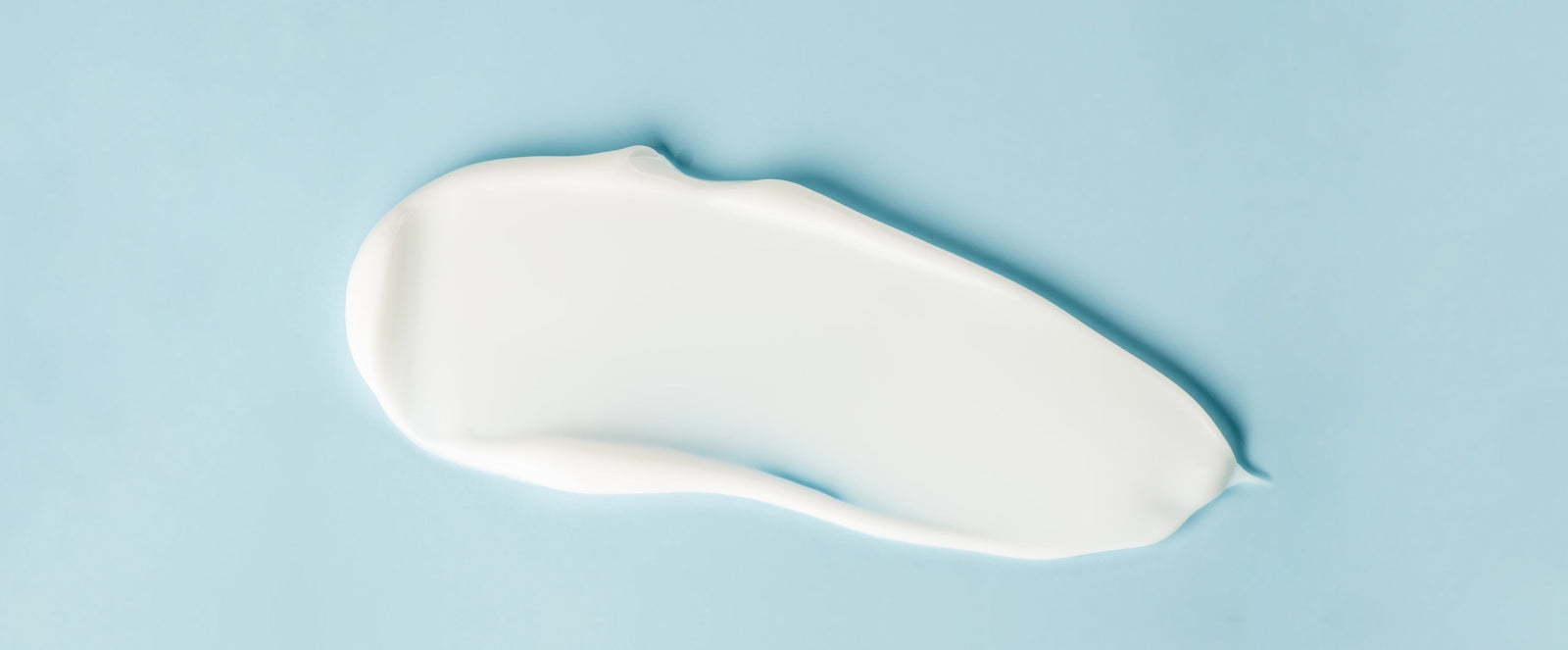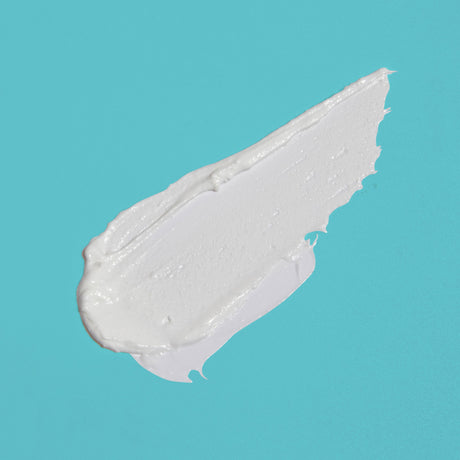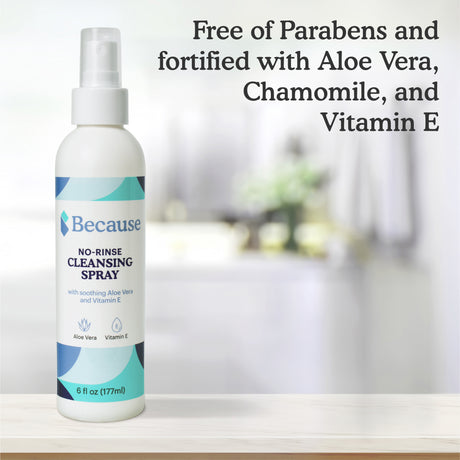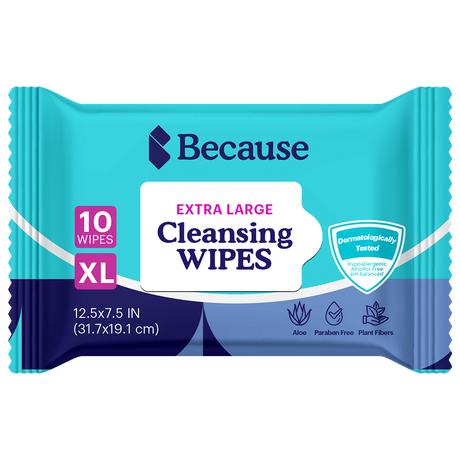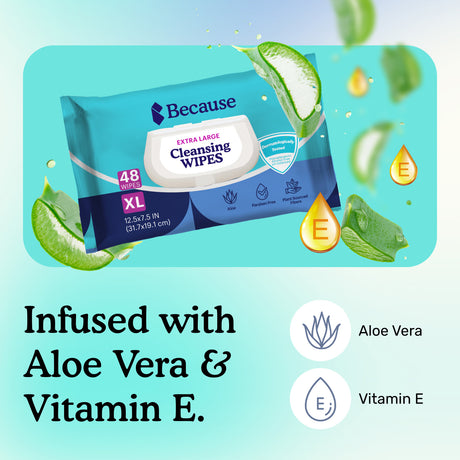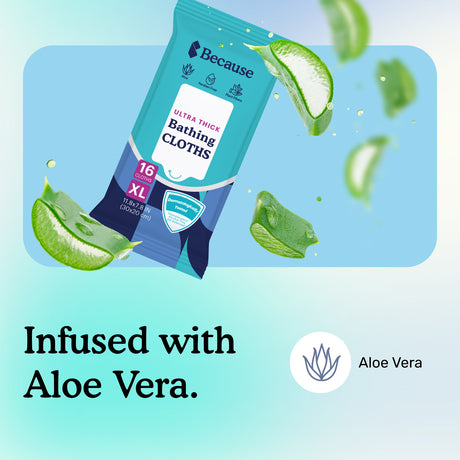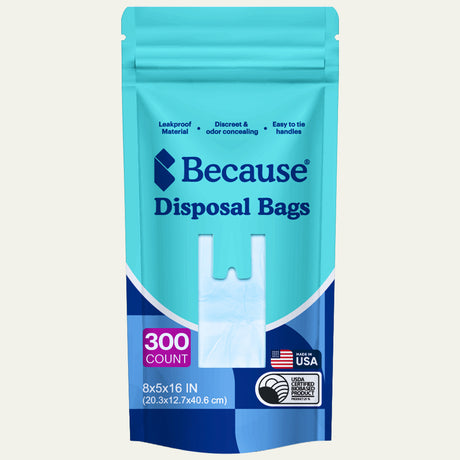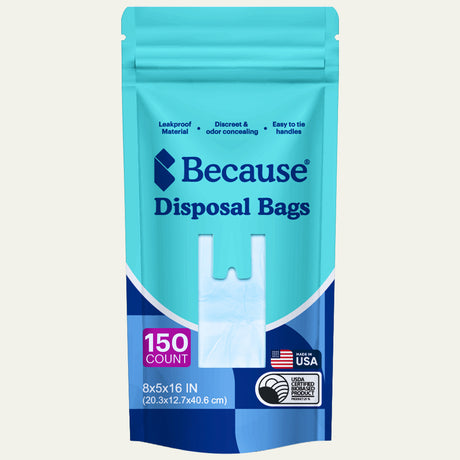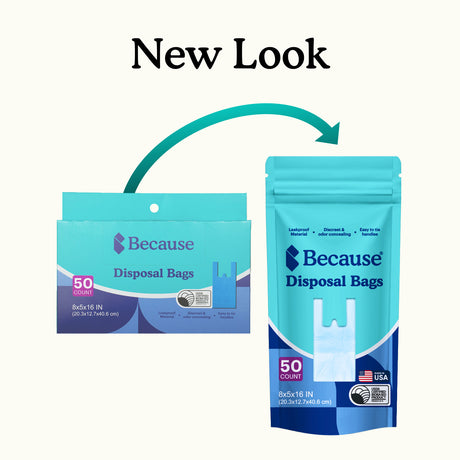If you have urinary or bowel incontinence, proper skin care is crucial to feeling your best. Ongoing care and the right incontinence products can reduce the risk of irritation and dryness when used correctly. This way, barrier creams are essential to a healthy incontinence skincare routine. Read on to learn what they are, how to choose them, and how to identify a high-quality product.
What Is Barrier Cream for Incontinence?
Barrier cream for incontinence is a protective cream you can apply to your private area. It’s a protective barrier between the skin, urine, and feces. Although barrier cream is similar to ointments and creams used to prevent and treat diaper rash, barrier cream is formulated specifically for mature skin, while diaper cream heals a baby's more sensitive skin. As a result, it's best to use a barrier cream specially designed for adults with incontinence.

Common Skin Barrier Cream Ingredients
Zinc Oxide
Zinc oxide is a common ingredient in barrier creams due to its protective, soothing, and antimicrobial properties. It forms a physical barrier on the skin, shielding it from moisture, irritants, and friction, making it particularly effective for preventing diaper rash, bedsores, and contact dermatitis. Additionally, zinc oxide has mild antiseptic properties that help prevent infections while promoting skin healing. Its anti-inflammatory effects also aid in reducing redness and irritation, making it a preferred choice for sensitive or compromised skin barrier.
Dimethicone
Dimethicone is a common ingredient in skin barrier creams due to its skin-protective, moisturizing, and water-repellent properties. As a silicone-based polymer, Dimethicone forms a breathable, non-greasy barrier that helps shield the skin from moisture, such as urine or feces, irritants, and friction, making it effective for preventing diaper rash, pressure ulcers, and contact dermatitis from adult diapers. It also enhances skin hydration by reducing transepidermal water loss (TEWL) while providing a smooth, silky feel. Additionally, dimethicone is non-comedogenic and hypoallergenic, making it suitable for sensitive and compromised skin.
Petrolatum
Petrolatum, commonly known as petroleum jelly or the brand Vaseline, is a common ingredient in barrier creams due to its superior occlusive, protective, and healing properties. It forms a thick, water-resistant barrier on the skin, effectively preventing moisture loss and shielding against irritants, making it particularly beneficial for skin breakdown caused by wearing adult diapers. Its inert and non-comedogenic nature makes it well-tolerated by most skin types, including sensitive and compromised skin. Additionally, petrolatum supports the skin’s natural healing process by maintaining hydration and reducing friction, promoting faster recovery of damaged or irritated skin.
Lanolin
Lanolin is a common ingredient in barrier creams due to its excellent emollient, moisture-retaining, and protective properties. Derived from sheep’s wool, lanolin closely mimics the skin’s natural lipids, helping to repair and reinforce the skin barrier. It effectively prevents moisture loss by forming a semi-occlusive layer while allowing the skin to breathe, making it beneficial for treating dryness, chafing, and irritation. Additionally, lanolin has soothing and healing properties, making it ideal for sensitive or compromised skin, including conditions like adult diaper rash, eczema, and minor wounds.
The Benefits of Barrier Creams for Incontinence
Barrier creams offer several benefits, including the following:
Less Risk of Irritation
According to clinical studies, approximately one-third of all people with incontinence develops incontinence-associated dermatitis or IAD. IAD is a skin irritation caused by exposure to urine or stool. Prolonged contact with liquid or solid waste can cause an inflammatory response, resulting in redness and swelling. Barrier creams reduce the risk of IAD by providing a topical barrier that allows your skin to stay moisturized and soft.
In addition to lowering the likelihood of IAD, barrier creams can minimize irritation caused by rubbing. When you move, folds in your skin may rub together, leading to irritation called chafing. Barrier creams also reduce friction, making you less likely to experience chafed skin.
Fights Against Skin Breakdown
Repeated exposure to urine and stool infections can weaken the skin. Eventually, this can lead to the breakdown of skin. Barrier cream prevents this by limiting contact between body fluids and skin.
Supports Healing
The best barrier creams for incontinence contain ingredients that enhance the healing process. These products help the skin recover from irritation more quickly when used regularly.
Soothes and Moisturizes
Your skin has a natural protective layer called the moisture barrier. Water evaporates from the skin during the day through trans epidermal water loss. People with incontinence may experience accelerated water loss rates due to frequent wiping and irritation.
While acting as a physical barrier against body fluids, barrier creams also help to seal in moisture. As a result, they decrease water loss while addressing dryness and restoring your skin's barrier function over time. In addition, many formulas contain ingredients that soothe and calm irritated skin, helping you feel better while your body restores and repairs inflamed, damaged tissue.
When to Use a Barrier Cream for Incontinence
You can start using barrier cream for incontinence at any time. If you haven't developed a skin condition from incontinence, using a cream can reduce the risk of IAD ever occurring. For already-irritated skin, barrier cream is essential in healing by protecting the tissue.
Generally, you should apply barrier cream for incontinence after you dry off after bathing and every time you change your incontinence protection. If you experience incontinence overnight, you can also use it before bed.
How Are Incontinence Barrier Creams Applied?

To get the most benefits from a barrier cream for incontinence, follow these application steps during your personal hygiene routine:
- Remove your incontinence underwear or pad and dispose of it properly using an incontinence disposal bag.
- Thoroughly clean around your genitals, anus, and the skin between your anus and genitals (the perineum). While you can use mild soap and water, no-rinse cleaning sprays and cleaning wipes make this step quicker and simpler.
- Let your skin dry completely.
- To apply barrier creams and lotions, dispense a small amount of the product onto your fingertips and spread an even layer over your skin. With barrier cream wipes, simply glide the wipe over your skin and then throw it away.
Applying a moisturizing skin cream before the barrier cream can provide extra hydration for people with normal to dry skin types.
Should symptoms of irritation continue after using a barrier cream for several days, talk to your dermatologist or other healthcare provider.
If you're a caregiver helping a loved one apply barrier cream, wear protective gloves during each step.
The Best Barrier Creams for Incontinence
Even though they may also serve the same purpose, barrier creams for incontinence differ greatly. To get better results, you need to choose a high-quality product. Because Barrier Skin Cream stands out for many reasons, including:
- Zinc Oxide restores natural barriers: Our barrier cream contains zinc oxide, a mineral-based ingredient proven to form a protective layer over the skin. It aids in healing and can help restore the skin's natural barrier function over time.
- Vitamin E heals wounds: The vitamin E in our formula assists with wound and skin healing, with a natural soothing effect to ease discomfort associated with IAD and chafing.
- Natural plant-based superstars hydrate: Our barrier cream features plant oils and butters (like shea and cocoa) to supplement moisture levels in the skin with every application. Used regularly, the barrier cream eases skin dryness and prevents it in the future.
- Our gentle formula works: To suit the needs of those with sensitive skin, we use only gentle ingredients. Our formula is free of parabens (which trigger contact dermatitis allergic reactions in some people).
- It’s convenient and economical: Our barrier cream is competitively priced, and you can enjoy additional savings by subscribing and having the cream sent to you each month. In addition to individually selling barrier cream and barrier cream wipes, we also offer sets that combine barrier cream with other incontinence skincare essentials for easy shopping.
Looking for a solution to incontinence-related skin issues? Lock in moisture, promote healing, and prevent future irritation with effective barrier creams for incontinence from Because Market.
Related Articles:
- Barrier Creams: What to Look for and How to Use Them
- How to Apply Diaper Rash Cream the Right Way
- Incontinence Skin Care Guide + How to Prevent Skin Breakdown
- Vulvar Dermatitis: Understanding & Managing Skin Irritation
- Personal Hygiene for the Elderly: 10 Vital Tips for Seniors
Sources:
Gray, Mikel. et al. (2002, Jul-Aug). Perineal skin care for the incontinent patient. JAMA, 15(4):170-5. National Library of Medicine. https://pubmed.ncbi.nlm.nih.gov/12151983/
